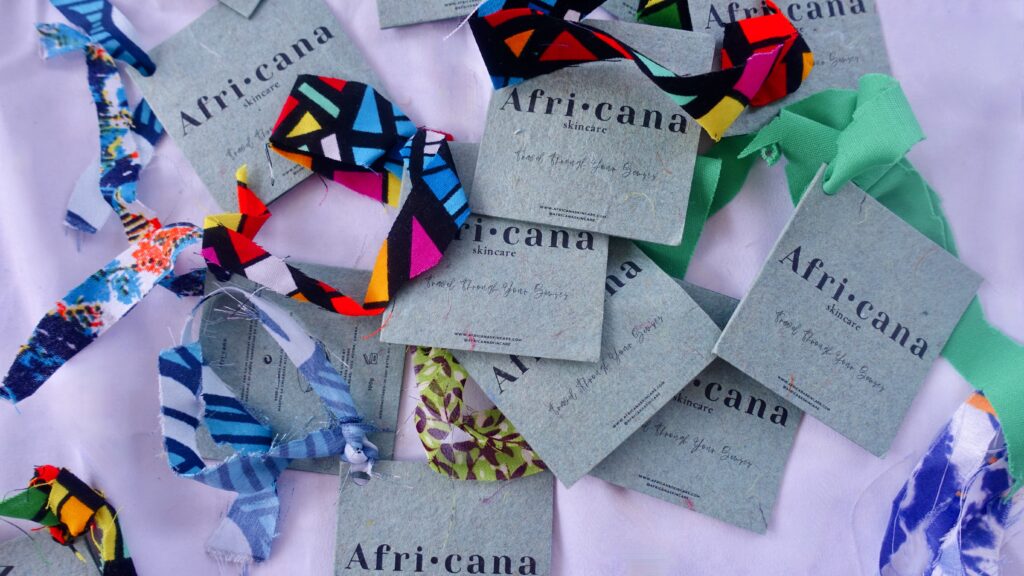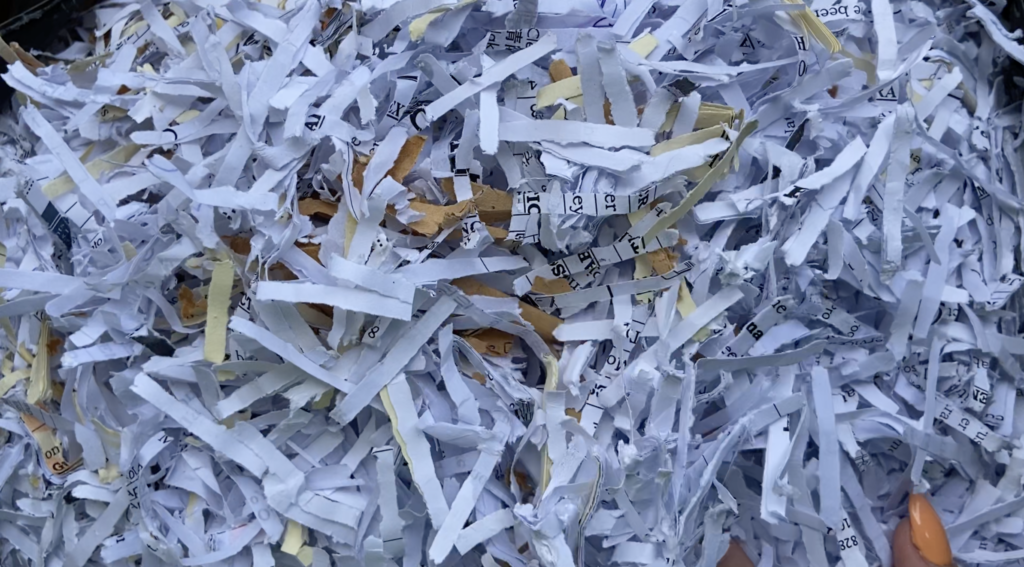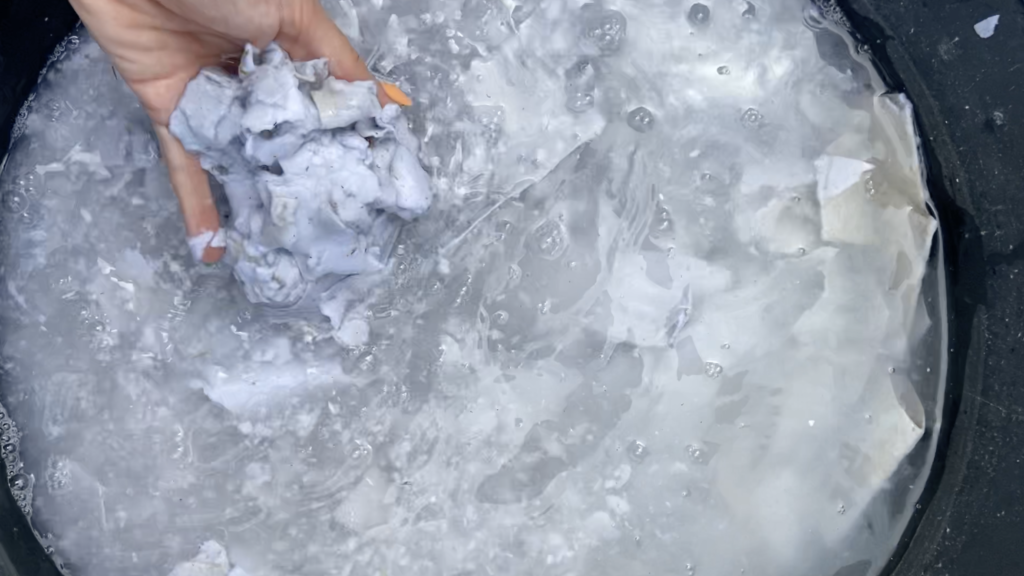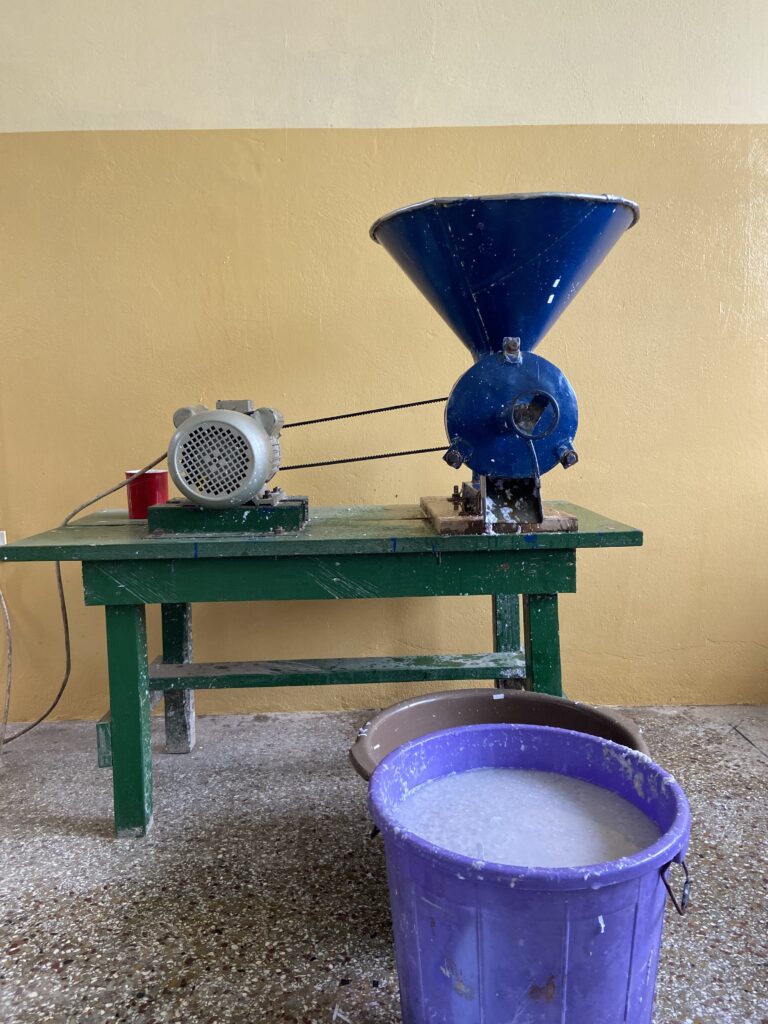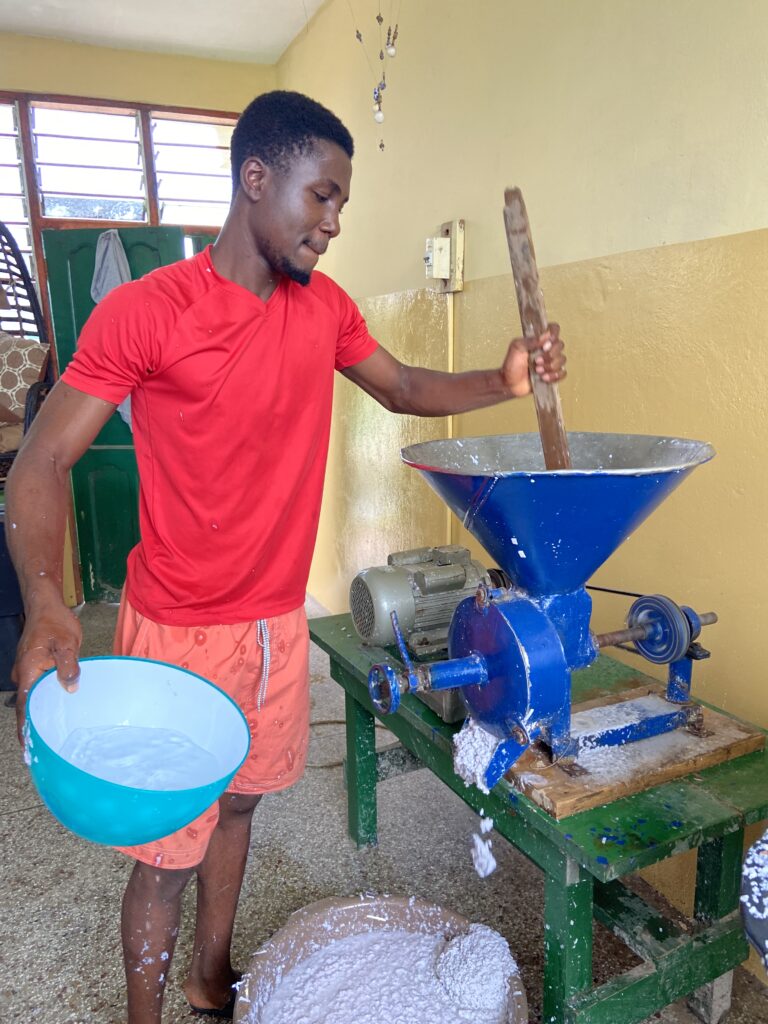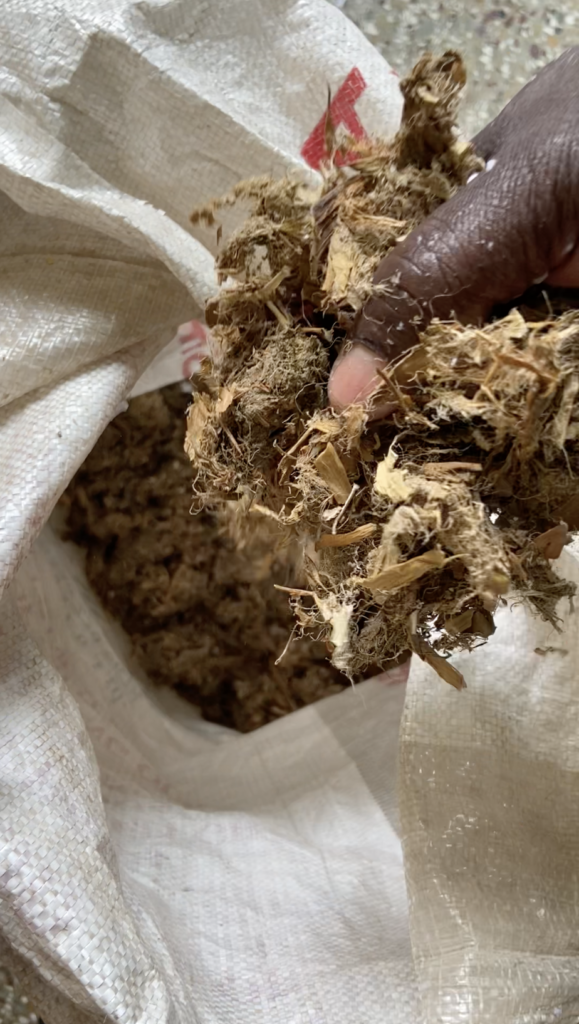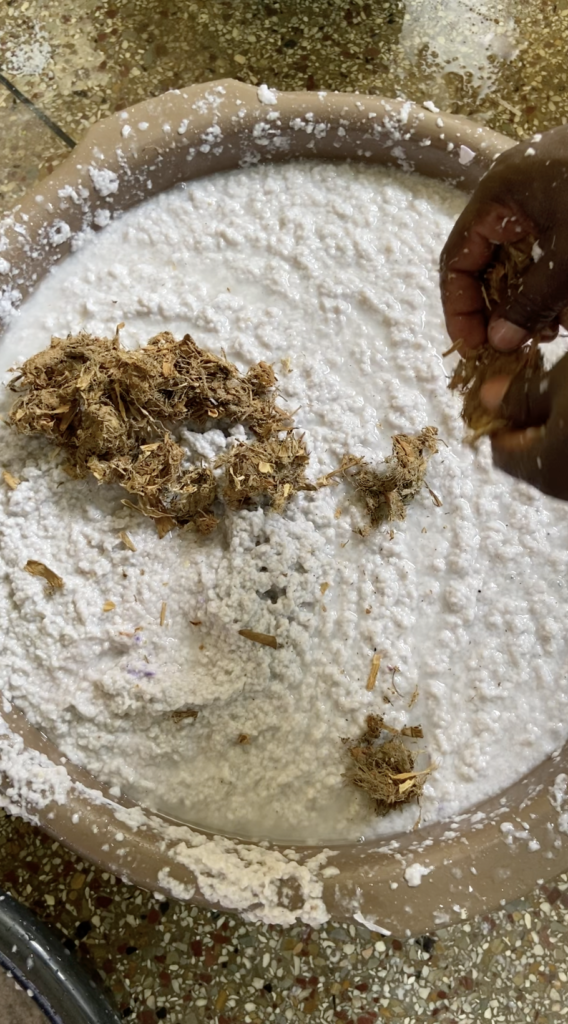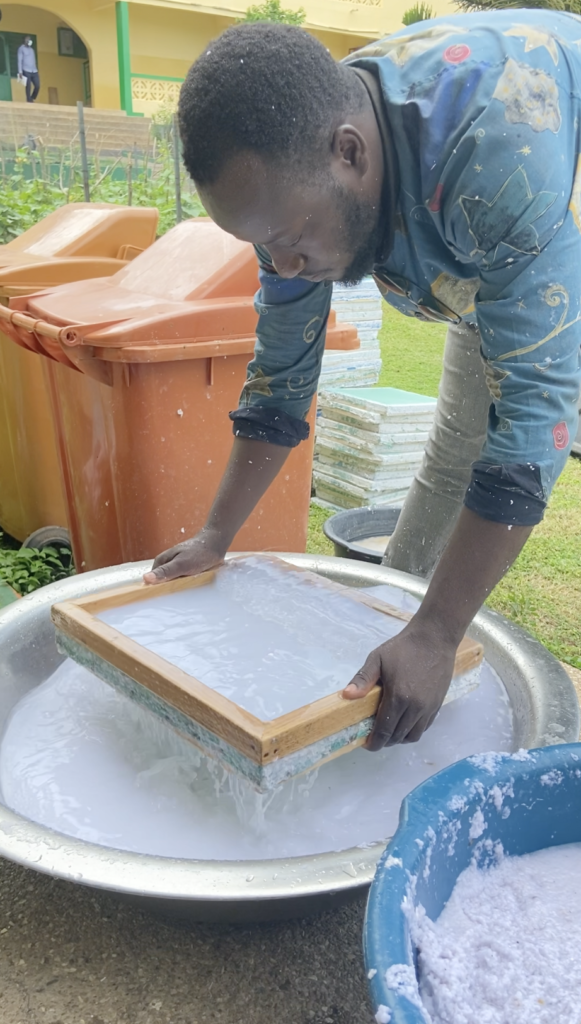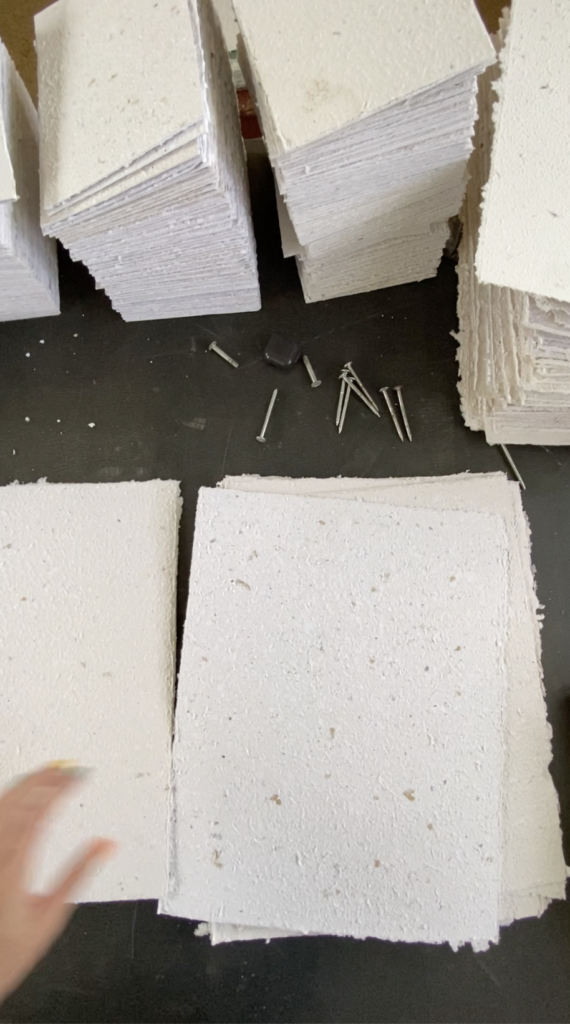Our sustainable packaging
Sustainability is one of Africana Skincare’s values and it’s at the core of how we do things.
Whether you have just discovered us or have been following us for some time, you will surely have payed some attention to our packaging.
We create our packaging using natural and local materials, most coming from plants, reusable and recyclable. An element of this packaging, which is what we will center this article on, is the type of paper we use, mainly for our tags.
Mulberry paper is the paper we have been predominantly using but part of how we operate is we like to keep sourcing and discovering other alternatives we can incorporate into our product which would help us increase our added value.
Throughout our search for sustainable materials produced IN Ghana (sourcing all of our materials in the country of origin is also something very important to us) we stumbled upon a recycled paper that is made by a Ghana based NGO.
The production process of this paper is very interesting and something we would love to share with you! A part from the fact that transparency is also one of our core values – when you hold one of our products you will know WHO made it, HOW it was made, WHERE it was made and WHAT the product is.
So let’s have a look at HOW this paper is made and WHAT it is made out of exactly!
The process of making recycled paper
STEP 1: soak paper in water
The first step of the process is to collect waste paper scraps and soak them in water for 2-3 days.
Waste paper scraps was usually free in Ghana, picked up from big multinationals who produced a lot of “waste” paper. Nowadays, even waste paper scraps have to be payed for! We got to know a big bag of waste paper scraps is worth 50 GHS (approximately 6 euro).
- Waste paper scraps
- Paper soaked in water
- Paper soaked in water for some hours
STEP 2: Blend paper
Once the paper has been soaked, it has to be blended in a special machine (see picture). It has to go through the machine a couple of times.
- Paper blending machine
- Paper blending process
STEP 3: Add dried pineapple crows
Pieces of dried pineapple crows are then added to the paper pulp. Why dried pineapple? Actually it does not serve any specific purpose other than adding to the papers aesthetics. If you observe closer, you will see little brown coloured pieces on the paper, making it more attractive visually.
- Dried pineapple crows
- Adding the dried pineapple to the paper pulp
STEP 4: Sieve the paper in a frame
Once the paper pulp has been mixed with the dried pineapple crows, it is mixed once again into a bigger bowl with water. The solids are then scooped with a sieve frame and dried on it.
STEP 5: Press and cut
The final stage is to wait for the paper to dry (depending on the weather may take a little longer), press it (usually by putting heavy stones on it) and paper is ready!


